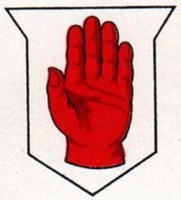
36th (ulster) division.
36th (Ulster) Division was raised from the Ulster Volunteer Force during September 1914.
On formation, the Division was organised as follows:
107th Brigade.
8th Bttn, Royal Irish Rifles (East Belfast Volunteers).
9th Bttn, Royal Irish Rifles (West Belfast Volunteers).
10th Bttn, Royal Irish Rifles (South Belfast Volunteers).
15th Bttn, Royal Irish Rifles (North Belfast Volunteers).
108th Brigade.
11th Bttn, Royal Irish Rifles (South Antrim Volunteers).
12th Bttn, Royal Irish Rifles (Central Antrim Volunteers).
13th Bttn, Royal Irish Rifles (1st Country Down Volunteers).
9th Bttn, Royal Irish Fusiliers (Armagh, Monaghan & Cavan Volunteers).
109th Brigade.
9th Bttn, Royal Inniskilling Fusiliers (Tyrone Volunteers).
10th Bttn, Royal Inniskilling Fusiliers (Derry Volunteers).
11th Bttn, Royal Inniskilling Fusiliers (Donegal & Fermanagh Volunteers).
14th Bttn, Royal Irish Rifles (Young Citizen Volunteers of Belfast).
The Division would campaign in the following locations:
The Somme, July 1916:
Albert (Thiepval).
Ypres, June 1917 to August 1917:
Messines.
Langemarck.
Cambrai, November 1917.
German Spring Offensive, March 1918 to April 1918:
St Quentin.
Somme Crossings.
Rosieres.
Messines.
Bailleul.
Kemmel Ridge.
Final Offensive, August 1918 to November 1918:
Ypres.
Coutrai.
Ooteghem.
Over the course of their time on the Western Front, the Division's order of battle was amended several times. Battalions that formed part of 36th (Ulster) Division at the end of the war are shown in bold.
107th Brigade.
8th Bttn, Royal Irish Rifles merged with its 9th Bttn in August 1917 before being disbanded during February 1918.
10th Bttn, Royal Irish Rifles was disbanded during February 1918.
15th Bttn, Royal Irish Rifles remained in the Division throughout the war.
1st Bttn, Royal Irish Fusiliers joined from 10th Brigade, 4th Division in August 1917 before transferring to 108th Brigade during February 1918.
1st Bttn, Royal Irish Rifles joined from 10th Brigade, 4th Division during February 1918.
2nd Bttn, Royal Irish Rifles transferred from 108th Brigade during February 1918.
108th Brigade.
11th Bttn, Royal Irish Rifles was merged with its 13th Bttn in November 1917 before being disbanded during February 1918.
12th Bttn, Royal Irish Rifles remained in the Division throughout the war.
9th Bttn, Royal Irish Fusiliers remained in the Division throughout the war although it was renamed 9th (North Irish Horse) Bttn in September 1917.
2nd Bttn, Royal Irish Rifles joined from 74th Brigade, 25th Division and 7th Bttn, Royal Irish Rifles from 49th Brigade, 16th (Irish) Division and the two battalions were then merged during October/November 1917 before transferring to 107th Brigade during February 1918.
1st Bttn, Royal Irish Fusiliers transferred from 107th Brigade during February 1918.
109th Brigade.
9th Bttn, Royal Inniskilling Fusiliers remained in the Division throughout the war.
10th Bttn, Royal Inniskilling Fusiliers was disbanded during January 1918.
11th Bttn, Royal Inniskilling Fusiliers was disbanded during February 1918.
14th Bttn, Royal Irish Rifles was disbanded during February 1918.
1st Bttn, Royal Inniskilling Fusiliers joined from 87th Brigade, 29th Division during February 1918.
2nd Bttn, Royal Inniskilling Fusiliers joined from 96th Brigade, 32nd Division during February 1918.
At the time of the Armistice in November 1918, the Division was at Mouscron in Belgium and remained there until it ceased to exist in June 1919.
The total nunber of casualties of 36th (Ulster) Division was estimated to total more than 32,000 killed, wounded and missing.



